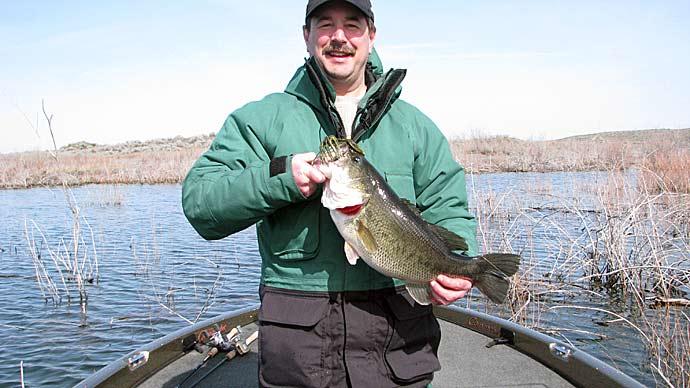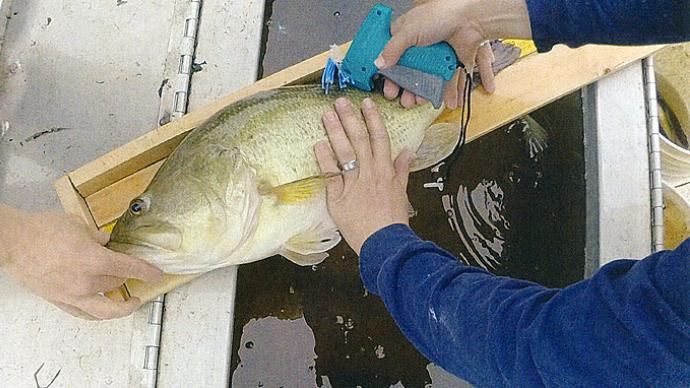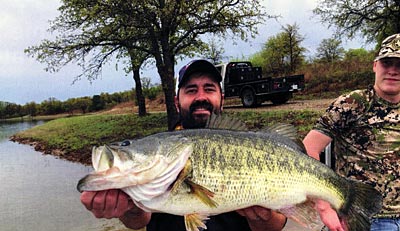
You are an avid pondmeister, reading and absorbing everything you can find on your favorite subject pertaining to your personal puddle. Seems nowadays, the most curiously thirsty of us satiate that appetite for knowledge anywhere and everywhere we can get it.
One of those favorite topics seems to be predator/prey relationships of fish under our gleaming waters. If you've studied this topic more than a few days, you know that Largemouth bass eat anything that fits into their mouths—if it's moving, even only a twitch. You also know bluegills are the backbone of the food chain.
But, did you know that bluegills are predator fish as well? If you've caught any sunfish on a red wiggler or hunk of night crawler, that's a clue. If the mouth of a fish sits at the end of its face, you can pretty well bet it's a predator by nature, with a few exceptions such as paddlefish and sturgeons. But not many of us stock sturgeons or paddlefish in private waters. If a fish's mouth points upward, it's likely a filter feeder, gleaning its food directly from the water column. Threadfin shad are examples of that. If a fish's mouth faces down, guess what? That fish feeds on the bottom. Carp, buffalo, and gizzard shad are examples of those fish.
Top line predators we might find in ponds across our nation include Largemouth bass, smallmouth bass, crappie, walleye, tiger muskies—all these are top end predator fish we might choose for our waters, depending on location. And, it's obvious they are predators.
We manage our food chains to support these primary species.
But, did you know all the catfish in your pond are also predators? Even the lowly bullheads are predators. A couple years ago, we electrofished a pond, captured a one-pound yellow bullhead, looked it over, and watched as it upchucked a six-inch gizzard shad and pieces of crawfish from its gullet.
A common question we get, especially from new pond owners who recently discovered they have bullheads is, "How do we get rid of these mud cats? Can we stock a couple of flathead catfish?" The answer is, "Nope, unless you want to trade problems." Fact is, we can't ask a flathead catfish to be selective about what they eat. A 30-pound flathead not only will eat your bullheads, it won't hesitate to inhale a three-pound bass. Same with big blue catfish. Blue cats eat big, too.
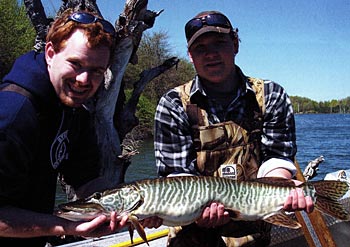
While some of this seems obvious, other predator fish aren't quite so easy to judge. Go back to those bluegills. Bluegills eat tiny fish and insects for one basic reason. Their mouths are too small to eat bigger nuggets. Redear sunfish feed on snails, because they have bony pads in the back of their throats so they can crush the crunchy little bites. The best news about some of these predator fish is that they are necessarily totally carnivorous, although that's their first choice. Channel catfish and bluegill are the two best known of our pond fish that go both ways. Being like hungry teenagers, they'll go to the fridge and try to find meat, but if the cupboard is bare, they'll settle for vegetables or a peanut butter and jelly sandwich. The nature of those fish is to eat whatever they find, although meat is their real deal. That's a big reason we can set up a feeder on shore and set it off to throw those tasty morsels at our fish. Catfish and bluegills will eat them.
The biggest take home point of this story is to grasp the concept beyond the obvious predator/prey relationships in our ponds—bass/ bluegills. But, if we aren't doing a few things to support the predatory nature of our bluegills, we don't get their best. We don't get their best reproduction or growth rates. Think about how you can support your supporting cast. Do those fish second in line in the predator chase have what they need? The two most obvious and easiest things you can do are to support great bluegill habitat and make sure they have adequate food. Great habitat begets natural food. Do that by thoughtfully managing your aquatic plants. Some bushy pondweed adjacent to a spawning bed is wise. Baby bluegills can quickly migrate into the safety of dense plant life. Don't like bushy pondweed? Chara works for those of us with hard, high calcium waters. Other plants suffice as well. Just avoid exotic species and those native plants that are too invasive. Provide more food by monitoring the visibility and color of your water. People today are less likely to fertilize their lakes than pondmeisters even ten years ago. But that may be wise if you live in the south. Supplement bluegill and redear natural foods with a healthy, fish-meal based floating fish food. Feeding the fish speeds up all the processes.
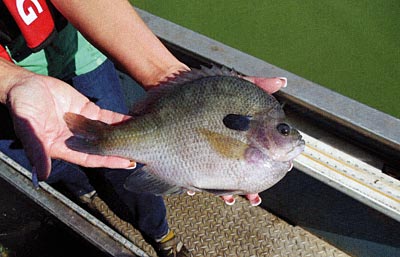
As you think through these different predator/prey relationships, understand that each one of these predators is trying to make a living off something living. Bass eat bluegills, crawfish, other bass, cottonmouth water moccasins, and even frogs and turtles. In order for our food chain to do its job, we truly should think about giving that mid-level blue collar working class some help in doing its job. It will pay off.
Another logical train of thought is to learn how each species of predator fish affects the others. Largemouth bass far outcompete smallmouth bass, no matter where those two try to co-exist. Largemouth dominate the space and food chain between those two species. Crappie aren't recommended in smaller bodies of water. There's good reason for that. Crappie mouths are too big to be small and too small to be big. Consequently, they eat the mid-sized forage fish voraciously, causing a gap in the food chain for bass. Toss in the fact that crappie are unpredictable spawners and you have a recipe for inconsistency, which eventually leads to dealing with overcrowded crappie that are about as big as my wife's hand and a little thicker than a postage stamp.
Some of the myths about predator fish is that they'll prey on just about anything. While that's fairly true, what they actually eat is based on a couple of things, namely seasonal availability and the size of that particular fish. A five-pound bass won't be chasing two-inch bluegills. That five-pounder would much rather eat the ten-inch bass that chases those two-inch bluegills.
Another myth about predator fish is that they tend to find their own niche. While that may be Nature's way, other factors influence the pursuit of the perfect niche. When a lake stratifies each spring, some of those fish that might choose deeper waters are forced upward. Crappie fit that bill, along with channel catfish and walleye. Walleye would much rather sit out in the cooler water during the day, and then push into shallow water at night to feed. Channel catfish are skittish, and they'd rather be on the move at night. But circumstances cause these types of predator fish to adjust preferred habits to whatever nature provides.
So, as you sit back and ponder your pond, or spend time on the Pond Boss forum, or dig through all the information the University of Google has to offer, peel back your thought process and figure out how all the different sizes of the different species you have in your pond can make a decent living out there in the wild, confined spaces of your healthy water.
Reprinted with permission from Pond Boss Magazine

